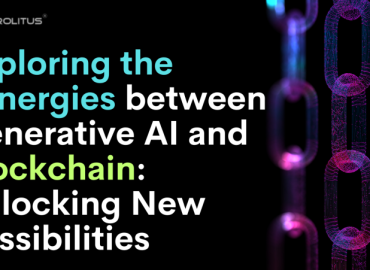What do people mean when they say the word Blockchain?
In recent times, Bitcoin has been showing all its glory, reaching new highs, setting new records, and most importantly, becoming the talk of the town. As for most people, it was seen as just a tool they could use to generate an extra buck or become a millionaire, and in this perplexity, they never stopped questioning what made it so special. What technology was this new currency using, which not only made it decentralized but also safe and secure and unhackable?
It’s not their fault per se, as when people did build that curious bone and started reading about the magic behind this creation, for many, this technology felt alien. They came across new terminologies and methods, which made them learn and understand them enough to make small talk but not their actual meaning.
This technology was called Blockchain technology. In layman’s terms, a blockchain could be deemed as a system with information in the form of blocks, and these blocks are connected, making china—a distributed network connected by nodes. The data collected in these blocks is stored digitally and then connected to a peer-to-peer network.
This network is the thing that makes blockchain decentralized; there is no centralized authority managing all the transactions, but a network of people who all have to authorize the transaction for the transaction to go through.
Although the network can be accessible to anyone, the data is stored using cryptography, making it impossible to penetrate and alter. Once a transaction is green, it cannot be deleted or changed. If only more and more chains could be added to the existing ones.
What are the different types of blockchain networks?
Blockchain, as discussed, can be called and denoted as the next-generation technology. People have already started to realize the importance of this technology and find ways to mold it into something profitable. They wanted to get rid of the old database that was based on servers and switch to a network of blockchain architecture, where participants in the network maintain, approve, and update new entries instead of servers.
The following are the types of blockchain network architecture.
Public Blockchain
This one could be called the OG blockchain, and as this is what started it all, it is a traditional form of blockchain. The network used here is public, and anyone who has access to the internet can authorize themselves as a node and join the network. Once authorized, these nodes or the users get access to the past and current transactions. They then have the authority to verify or do proof of work for incoming new blocks. Anyone with an internet connection can access the information that is stored on this network.
There can be many participants in these open-sourced networks, and more nodes guarantee a more secure network. fake transaction Or hiding an existing one is an impossible task as every node has an updated copy of the database at any given point in time.
This network is mainly used in the cryptocurrency format, as while doing the proof of work, they can perform mining and mainly use this blockchain for mining and exchanging cryptocurrencies.
This network is used to transact and mine cryptocurrencies like Bitcoin, Litecoin, and Ethereum.
Private Blockchain
The original idea behind blockchain was to make it a peer-to-peer network without a central authority that could approve transactions. This is what makes it decentralized. It was a public network, and this never made people question the transaction’s security and safety. They were indeed hackproof.
But this did not stop organizations from fearing and questioning the chances of confidential data being made public and being leaked.
This paved the way for creating a private blockchain network. A private blockchain network is a restrictive and permission-based network, and the authorization of accessibility is in the hands of the controlling organization. Private Blockchain is a scalable network that can be scaled according to the companies’ needs. If they wanted a blockchain of only 30 nodes, it could be easily deployed. It provides organizations with flexibility.
This network uses the same technology that is being used in public networks but with restrictions on the entry of users. This allows the organization to handle who is getting the authorization of the network and reduces the risk of data sharing with rivals. Private blockchain networks are deployed for supply chain management, ownership, digital identity, voting, etc.
Consortium Blockchain
“Consortium Blockchain” is a variation of a private blockchain network. It can be said to be a semi-decentralized network. We saw in private blockchain that the authority to manage the network is restricted to a single organization. They are the entire and only. On the contrary, in the case of consortium blockchain, more than one organization is coming together in a network. In this network, more than one organization can work as a node, and they have the full authority to exchange information and mine.
Organizations like the government and banks use these kinds of networks. This helps them share data with their selective other organizations and, at the same time, keeps the network private and permission-based.
Hybrid Blockchain
This blockchain network, as the name suggests, is a hybrid. This has the features of both private and public blockchains. With this hybrid approach, users can decide what data they want to make public and what they want to make private, and that can determine who gets what. The information in this network can be set as a private, permission-based system or a public, non-permission-based system. A hybrid blockchain was created so the user could use both networks’ benefits and decide what part of the chain’s information they wanted to make public and what they wanted to keep private.
The data of private chains is verified within the system, but there is also an option for the users to make that data public.
With the help of a public network, the number of nodes checking the transaction goes up. This makes the blockchain network more secure by increasing its security and transparency.
What are all the places where blockchain is being used?
According to an interview with coingeek, “How our timestamping mechanism was used in Bitcoin” Scientists Stuart Haber and W. Scott Stornetta stated how back in 1991, they wanted a computationally practical solution for time-stamping digital documents so that they could not be backdated or tampered with once recorded. This is why they came up with and put into place a way to store time-stamped documents using the idea of a cryptographically secure chain of blocks.
In 2004, Hal Finney came up with a reusable proof of work system that was published under a BSD-like licence. In this, Hal Finney created a system that would work by receiving non-fungible hash cash-based proof of work in return, creating RSA-Signed that could be transferred from person to person. Then, in 2006, something big happened. As per bitcoin.org, an anonymous person or group named Satoshi Nakamoto published a white paper called Bitcoin: A Peer-to-Peer Electronic Cash System, and it was at this time that the blockchain saw its first mainstream limelight.
At first, blockchain was seen as only a technology that would support cryptocurrencies and nothing much else. This all changed when Ethereum was introduced.
This opened all new possibilities for businesses to try their hand at this new web3 technology.
When different blockchains were developed and Hyperledger blockchain networks were introduced, they sent an invitation to businesses to come and join them.
The business sees blockchain as a reliable way of storing data about other types of transactions as well.
Blockchain technology is used to store data by a wide range of organizations, including those in banking and finance, healthcare, the supply chain, and many parts of the government.
It is also suggested by many that blockchain technology should be used in the voting process, making it impossible to rig the systems and data tampering.
(https://www.javatpoint.com/history-of-blockchain, https://coingeek.com/how-our-timestamping-mechanism-was-used-in-bitcoin-video/,)
How Prolitus can help you with building blockchain solutions?
With blockchain coming out as a newer concept for many, adding to the already existing ignorance regarding the real-life usage of blockchain technology, it becomes a little tricky for a few to even step foot in this industry.
Prolitus ensures that you no longer feel like an out-of-shape cube. Prolitus is one of the leading companies in this blockchain development industry.
Our team of experts helps you develop a system and teaches you the knowledge that will help you survive and reach new heights in this market. Prolitus blends blockchain and its expertise to create the most secure blockchain development solutions.
We have a team expertized in DApp configuration, helping you to build and launch applications for blockchain networks that are easy yet effective and user-friendly.
For projects like Web3 or DeFi, we offer auditing and smart contract services, which make it easy to put business plans into action.
Prolitus offers support services 24 hours a day, 7 days a week. They make sure that your problems are fixed as soon as they come up by making a diagram of your blockchain network that makes everything as clear as a crystal.
Is blockchain actually as safe as they give credit for it?
As advocated by many, blockchain is considered the most secure form of recording and storing translation and data. This technology provides decentralization, making it impossible to tamper with.
It cuts down on mistakes by getting rid of the human element, and it saves money by getting rid of the need for third-party verification.
It can be said that this technology, as of now, is pretty solid, and with more and more updates, like private blockchain, hybrid blockchain, and more, its usage is becoming more and more user-friendly.
Nature vs. Blockchain Technology
Although with all the benefits that this technology brings, some drawbacks need to be addressed.
This network consumes vast amounts of computational power.
This technology relies heavily on many computers doing a bunch of little calculations 24/7, which requires keeping these systems running all the time. Because of this, it uses an unimaginable amount of electricity—an amount of electricity enough to power a city or even a small country. No one can ignore the fact that this amount of consumption will go unnoticed and won’t leave behind carbon footprints. These carbon footprints are not a good sign for the planet; if something is not done in this scenario, the catastrophe it brings would be dire.





